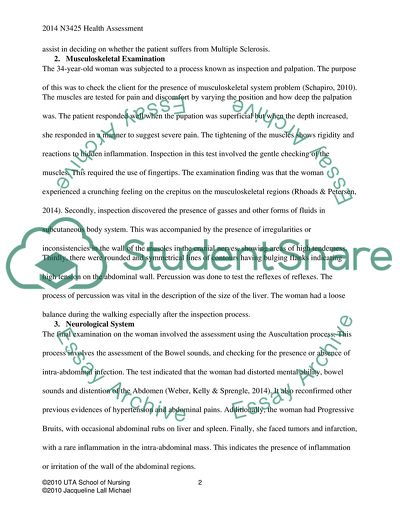OBJECTIVE data collection of a patient who has Multiple Sclerosis Coursework. https://studentshare.org/medical-science/1807524-abdominal-pain-and-discomfort
OBJECTIVE Data Collection of a Patient Who Has Multiple Sclerosis Coursework. https://studentshare.org/medical-science/1807524-abdominal-pain-and-discomfort.


